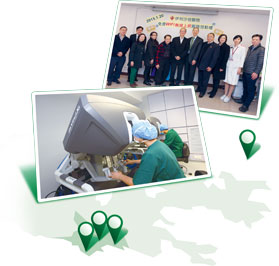

* Total inpatient, day patient discharges and deaths
KCC managed staff shortage through recruiting additional allied health professionals and patient care assistants to enhance multi-disciplinary care and rehabilitation service. While 100 nursing students joined QEH nursing school, nursing manpower was also strengthened to meet operational needs in pressure areas.
 |
The accreditation status of QEH was successfully renewed in 2014 for another four years by Australian Council on Healthcare Standards. In pursuit of continuous quality improvement and patient safety, a barcode-based tracking and archiving system in anatomical pathology laboratory was implemented in QEH to ensure correct identification of specimens. Ageing washing facility in QEH was replaced in phases to improve sterilisation of surgical procedures with the surgical instrument tracking system rolled out to other KCC hospitals. The Cluster had phased out the re-use of selected types of single |
use device to ensure patient safety. BTS also enhanced their blood bank management information system to meet increasing service demand. Paediatric clinical pharmacy service was introduced in QEH and KH for better medication safety. Auto-refill services for medical consumables, personal protection equipment, central sterilised supplies and linen items were fully implemented in BH and HKEH. |
|
Initiatives of baby-friendly hospital were promoted in QEH. Other than setting up a breastfeeding support team, a new Chinese cookbook sharing gourmet ideas for new mothers was launched in July 2014.
To dovetail with the Government’s planning of the Kai Tak development area, Phase 1 of the KCC Clinical Services Plan was completed and planning work for a new acute hospital has commenced.